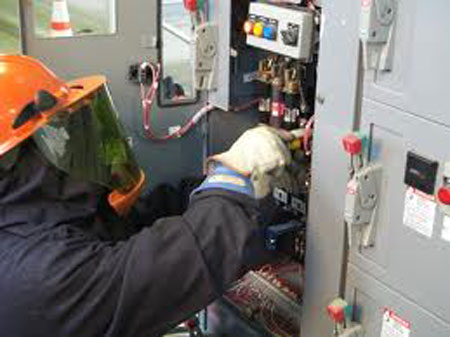
|
|
| home | contact | team t&d | group websites | markets | exports | blog |
 |
|
Arc Flash Clothing, Protection & NFPA 70E
By Chris Dodds on 8th May, 2015

CATU Electrical Safety Equipment
Arc Flash Clothing & Protection

Arc flash is a short circuit through air that flashes over from one exposed live conductor to another conductor or to ground. Arc flash incidents are common and costly, and the frequency of reported accidents is increasing - making arc flash a very hot topic within OSHA and the overall electrical safety industry.

Catu Electrical manufacture a broad range of Arc Flash Clothing, PPE and Protection Kits - this includes arc flash suits, arc flash hoods, arc flash helments (face shields) and arc flash overall suits in both Indura and Nomex arc flash and flame retardant fabrics.
Arc flash can occur during live cable jointing, phasing in operations, racking in and out of switchgear, reclosing of electrical switchgear onto a fault, switchgear failure, excavating near live cables or accidental contact with live conductors during maintenance.

What Causes Arc Flash?
Arc flashes can be caused in a variety of ways:
- Just coming close to a high-amp source with a conductive object can cause the electricity to flash over
- Dropping a tool or otherwise creating a spark can ignite an arc flash
- Equipment failure due to use of substandard parts, improper installation, or even normal wear and tear
- Breaks or gaps in insulation
- Dust, corrosion or other impurities on the surface of the conductor

How Common Is Arc Flash?
- In the past, if someone suffered burns in an electrical accident, people thought the burns were caused by the electrical shock passing through the body. Electrical shocks can cause burns. But what research has shown is that most burns from electrical accidents actually come from arc flash.
- According to the NFPA 70E-2004 standard, the majority of hospital admissions due to electrical accidents are from arc flash burns, not from electrical shocks. Of the approximately 350 persons killed in the work place by electricity last year, roughly 50% were related to arc flash
- A report compiled by Capelli-Schellpfeffer, Inc., estimates that five to 10 arc flash explosions happen in the USA every day, resulting in 1 to 2 deaths per day.
- That figure only takes into account incidents where victims were sent to special burn centers. The number does not include cases sent to regular hospitals or clinics, nor unreported cases or near misses.
- NFPA 70E-2012 states that each year more than 2000 people are admitted to burn centers with severe arc flash burns.
Blog By Electrical Engineering Portal: Be extremely carefull when racking in and racking out of circuit breakers
T&D stock and distribute Arc Flash Clothing & Protection.
Need To Know More? Turn to the experts at e-hazard for all of your NFPA 70E training. Our team of instructors are some of the most respected and trusted people in the electrical safety field. Our NFPA 70E training covers the most up to date information and changes in electrical safety. Let us know how we can help with your NFPA 70E training. Follow Hugh Hoagland @nfpa70e
Video : Ultra Slow Motion Arc Flash 480V
- Further Reading
Arc Flash Clothing Protection for LV-HV Electrical Engineers Working With UK DNO's
Catu Arc Flash Clothing Protects Against Arc Flash Blast + Videos
Invitation
Thorne & Derrick are inviting you to join LinkedIn’s fastest growing Discussion Group : Low & High Voltage Power, Cabling, Jointing, & Hazardous Area Electricals (LV-HV).
Discussion subjects include cable installations, cable jointing, electrical substation, overhead line and electrical construction at LV, 11kV, 33kV and EHV.
Network, engage and promote your profile, company or products with over 10,000 influencers.
 |
Category: Electrical Safety & Arc Flash
Sort by Category:
- #ThrowBackThursday
- 3M Scotch Tapes
- ABB Power Products
- Business
- Cable Accessories
- Cable Cleats & Cable Ties
- Cable Containment LV HV
- Cable Crimping & Cutting Tools
- Cable Jointer Training Courses
- Cable Jointing - PhotoBlog
- Cable Labelling & Marking
- Cable Laying & Cable Pulling
- Cable Transits & Duct Sealing
- Company Updates
- Earthing & Lightning Protection
- Electrical Equipment HV
- Electrical Equipment LV
- Electrical Safety & Arc Flash
- Exports
- Flexible Conduit Cable Management
- Hazardous Area Electricals & Lighting
- HV Cable Jointing & Terminating
- LV Cable Jointing & Terminating
- Nexans Euromold Cable Accessories
- Plugs & Sockets
- Power Distribution & Feeder Pillars
- Prysmian FP Cables
- PV Solar Farms
- Rail
- T&D History Blog
- Terms & Conditions of Sale & Purchase
Tweets by @ThorneanDerrick






























